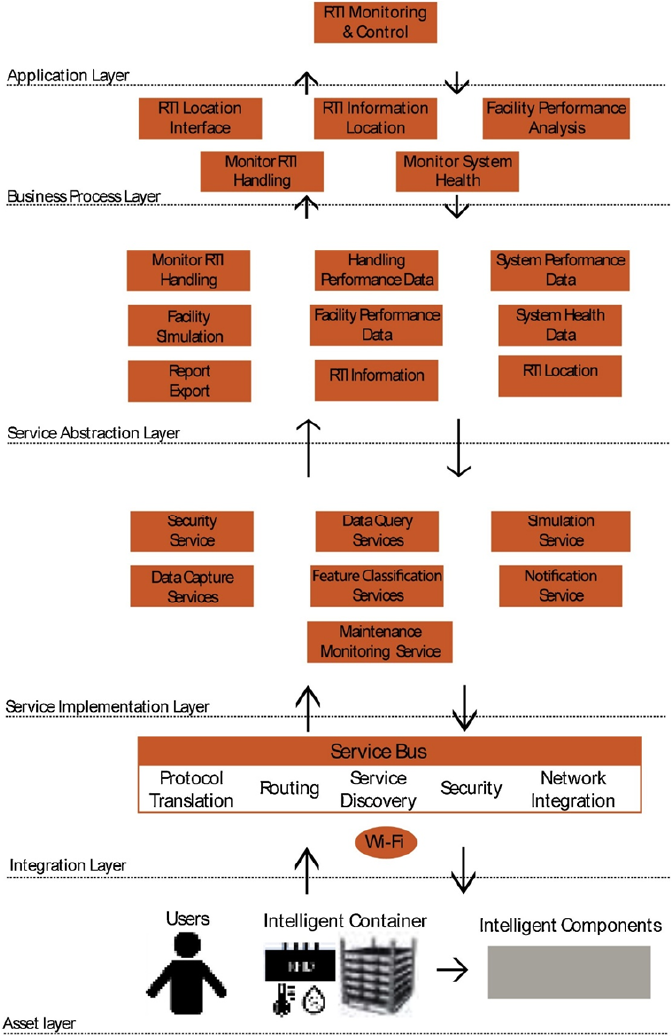Build new products based on AI and IoT technologies.
Introduction of smart transportation boxes for provisioning and delivering of production tools to be maintained and recertified: Transportation boxes will know their location, condition (filling level, kind of tools inside, …) and environmental surrounding environment (humidity, dust, temperature, …) through sensors and localisation systems. Based on these data the box will decide when to be picked-up by the maintenance crew. This will be indicated by sending a message (SMS, eMail, …) requesting a suitable pick-up date and time.
Industry Sector:
Solution provider & integrator in manufacturing and logistics
Challenge classification:
Product servitization: create mutual value through a shift from selling product to selling service; Usability improvement through IoT technologies; Smart products; Reducing operational costs
Time for Project Completion:
6 months
____
Preliminary Analysis:
Nowadays, there is a growing tendency to integrate physical and digital worlds with each other and with the required real-time connections between the digital model and the physical machines, products and processes contained within it. This entails the need for continuous availability of information about products, tracking their flow in the production process, and improving operational control through dynamic decision making. Taking this into account and looking at the requirements formulated by the company, the second option should be chosen, i.e. the development of intelligent transport boxes.

Figure 2. An intelligent container overview. Source: [1]
Figure 2 shows selected functions of the intelligent transport box: sensing experiences (e.g. ambient temperature, humidity, dirt, poor transport operations—drops, shocks); identifying and communicating with intelligent items (products) that will be transported in the box and with machines or transporter vehicles; making decisions based on data from sensors, e.g. about the need to transport the box, checking the condition of the box or repairing it; the possibility of publishing notifications, e.g. warnings about improper transport of the box. In addition, the intelligent transport box can manage information, notifications and decisions on behalf of the items it contains, and after unloading items, it can be associated with another set of items.
____
Solution Summary:
Based on the review of the sources, we propose to implement the solutions shown in Figure 3. Figure 3 shows reference architecture, which consists of six layers. Authors of [1] describes these layers as follows:
- “the asset layer represents the unique real-world assets which are intelligent containers (Returnable Transit Item, RTI) and intelligent items,
- the integration layer, representing the service bus and how differing technologies can integrate the real world into the cyber-physical system (CPS),
- the service implementation layer, describing the individual service implementations that provide well defined services, i.e. data capture, data filtering and data analytics,
- the service abstraction layer describes fundamental business service, i.e. scheduling, RTI locating and monitoring, that orchestrates service implementations from the layer below,
- the business process layer orchestrates a number of service abstractions to define a particular business function, i.e. dynamic RTI control or quality control monitoring and finally,
- the application layer describes the interaction of business processes to define an application, i.e. intelligent manufacturing.”
The implementation of the intelligent transport boxes assumes that the items transported in the boxes will be equipped with RFID tags (intelligent products). Each intelligent product and intelligent container must be uniquely addressable with its own data model. CPS can listen for notifications (i.e. location updates, bad handling events), and proactively initiating commands (i.e. move to repair). CPS can offer services with relevant rules developed on the business process layer. An example would be identifying a wrong shipment. By analyzing the data sent by the intelligent container, thanks to feature recognition techniques, information about unwanted hits on the transport container can be extracted along with the strength of the impact. Knowing the type of the transported item (e.g. glass products sensitive to impacts) thanks to RFID tags, it can predict whether the items transported in the container have been damaged.

Figure 3. Reference architecture with an intelligent container and intelligent components. Source: [1]
Additional opportunities:
- full detailed history of monitoring of the transport boxes (events, routes),
- calculation of measures regarding the transport boxes (e.g. collision rates),
- defining any events about which the maintenance crew will be automatically informed (e.g. exceeding the maximum temperature at which the transport box can operate, exceeding the tilt angle, which may indicate the transport box overturning),
- automatic decision making about the need to inspect the transport box, e.g. in the case of collision detection,
- intelligent containers can reduce the load on CPS by taking over services such as feature determination, data capture and handling performance data, which can reduce the computational needs of a CPS software implementation,
- greater integration of product, processes and operators within the manufacturing domain.
Possible difficulties:
- Difficulties with the correct operation of the RFID system due to possible disturbances in the production environment.
- Problem with communication between the company’s staff and IT specialists.
- Unavailability of personnel and/or workstations related to the necessity to carry out the production process.
____
Sources:
[1] https://www.sciencedirect.com/science/article/pii/S027861251830428X
[2] https://journals.sagepub.com/doi/full/10.1177/16878140211040888
